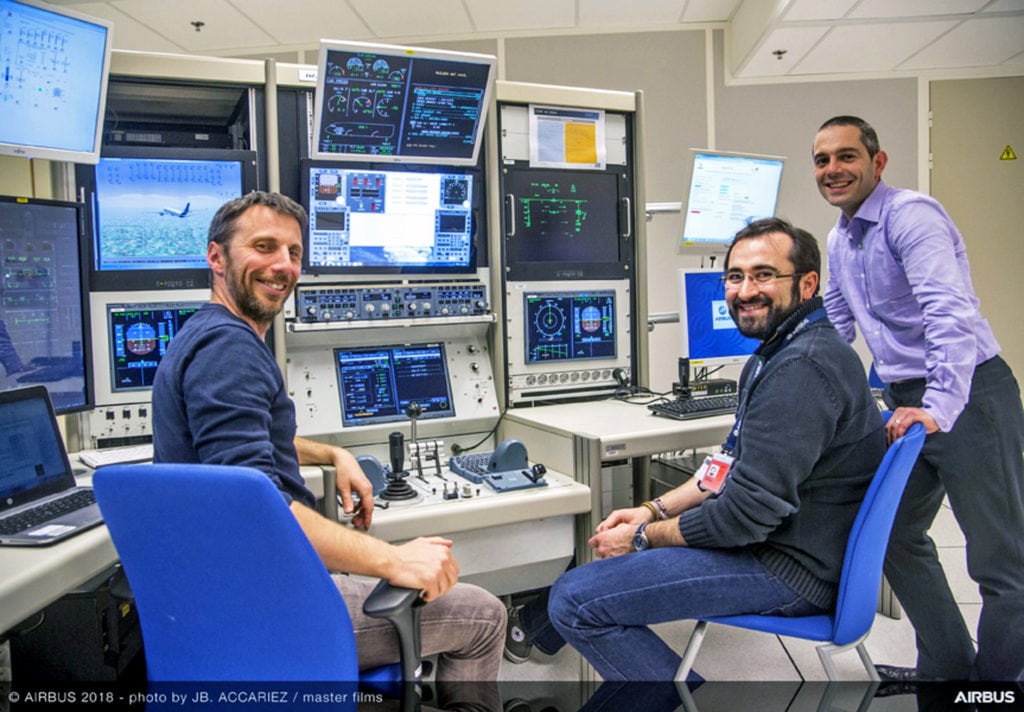
Airbus’ new AED technology is targeted for the A350-1000 and A350-900 for now. Photo courtesy of Airbus
The first Airbus A350-1000, which was delivered to launch operator Qatar Airways last month, is equipped with a new safety feature that will now be standard across all A350-1000s.
Called the automated emergency descent (AED), this system engages the aircraft’s autopilot function to automatically and quickly bring the aircraft to a lower, safer altitude in the event of in-flight cabin depressurization.
“Depressurization events are extremely rare,” said Yann Besse, an autopilot laboratory test team engineer for Airbus. “Our goal was a simple system that provides significant workload alleviation when a rapid descent is required.”
The AED mode is triggered when the cabin pressure falls below a predetermined limit. After alerting the flight crew, the system engages the autopilot to bring the aircraft to a lower, safe altitude if there is no crew reaction within 15 seconds.
Developing the new system also meant coming up with a way for Airbus engineers to work across the company’s separate locations. The AED system requires a seamless interface between the aircraft’s autopilot system, which is developed in France, and cabin pressurization system, which is developed in Germany, explained Besse.
With the AED system already standard on the extended-fuselage A350-1000 version, its certification for the shorter-length A350-900 variant is in progress and expected soon. Airbus said it will explore wither to expand the system further after collecting user feedback.